RICINUS
Ricinus
L., Sp. Pl. 2: 1007. 1753; Gen. Pl. ed. 5: 437. 1754; Muell. Arg. in DC., Prodr. 15(2): 1016. 1866; Benth. & Hook. f., Gen. Pl. 3(1): 321. 1880; Hook. f., Fl. Brit. Ind. 5: 457. 1890; Pax in Engl. Pflanzenreich 4. 147. 11: 119. 1919; Qiu & Gilbert, Fl. China @ eFloras.org 11: 248; Gillespie, Fl. North Amer. @ eFloras.org vol. 12; Radcliffe- Smith, Fl. Pak @ eFloras.org p. 69.
A large monoecious glabrous annual or perennial herb. Latex absent. Leaves alternate, petiolate, stipulate, simple, peltate, palmately-lobed, glandular-serrate at margin, penninerved. Petioles long, glandular at apex and base. Stipules united to form a caducous sheath, leaving circular scar at node. Inflorescence usually bisexual with proximal male flowers and distal female flowers or all flowers female, terminal or leaf-opposed subpaniculate racemes; bracts membranous, caducous, glands subtending each bract 2. Pedicels present, articulate. Male Flowers: Male buds globose. Calyx 3-5 lobed, valvate, closed in bud. Petals 0. Disc 0. Stamens numerous (up to 1000), with filaments variously united into about 25 slender, irregularly branched columns/ phalanges; anthers basifixed, bithecous, subglobose or globose, longitudinally dehiscent. Pistillode 0. Female Flowers: Pedicels extending in fruits; buds conical. Sepals 5, valvate, caducous. Petals 0. Disc 0. Ovary 3-locular with 1 ovule per loculus, usually echinate, occasionally smooth; styles 3, +/- free, bipartite, papillose-pumose, dark-red. Fruit a trilobate capsule, 3-locular, usually echinate, dehiscing into 3 bivalved cocci. Seeds dorsi-ventrally compressed, ovoid, smooth, carunculate, testa crustaceous.
One species
Ricinus communis
Ricinus communis
L., Sp. Pl. 2: 1007. 1753; Muell. Arg. in DC., Prodr. 15(2): 1017. 1866; Hook. f., Fl. Brit. Ind. 5: 457. 1887; Parker, For. Fl. Punj. ed. 1: 461. 1918 (Reprint 1973); Pax in Engl. Pflanzenreich 4. 147. 11: 119. 1919; Fl. China @ eFloras.org 11: 248; Fl. North Amer. @ eFloras.org vol. 12; Radcliffe- Smith, Fl. Pak @ eFloras.org p. 69.
An evergreen, erect, soft-wooded monoecious shrub or occasionally a small tree, up to 3 m tall. Stem hollow. Younger parts glaucous, whole plant often reddish or purplish. Indumentum absent. Leaves alternate, petiolate, petiole stout, 18-45 cm long, hollow when mature, adaxially 2 sessile glands at apex and variable number (0-3) of different shapes present at/ near the base. Leaf blade circular in outline, 20-50 cm in diameter (near to size of petiole), peltate, palmately 7-12-lobed, medium lobe largest, 10-20 cm x 2-9 cm, the lateral ones progressively smaller, lobes lanceolate to oblanceolate, margin serrate or biserrate with irregular teeth, teeth gland-tipped, apex acute to acuminate; laminar glands scattered on adaxial surface. Stipules 2-3 cm long, connate forming sheath, sheath ovate, leaving a circular scar at node when fallen. Flowers large, in terminal 10-25 cm (35 cm in fruit) long subpanicle racemes, bisexual, the upper flowers female, lower ones male. Bracts 1 cm long. Male Flowers: Pedicels ca. 6 mm long, 3-5 partite, lobes 5-8 mm x 3-4 mm, slightly unequal, valvate, membranous, elliptic-ovate, acute, yellowish green, erect when young, reflexed at maturity. Petals 0. Disc 0. Stamens numerous up to 1000, with the filaments variously united into about 25 slender, irregular branched columns/ phalanges; stamen cluster +/- spheric, 10-12 mm diameter and 7-8 mm long; anthers ca. 0.4 mm long, pale yellow, basifixed, bithecous, globose or subglobose, longitudinal dehiscence. Pistillode 0. Female Flowers: Congested; pedicels 3-5 mm long, articulated, extending up to 4.5 cm in fruit. Calyx ca. 5 mm long, spathaceously splitting, lobes 5, ovate-lanceolate, acuminate, green-purplish, caducous. Disc 0. Staminodes 0. Ovary ca. 2 mm x 2 mm, trilobate-subglobose, densely covered with slender, conic, soft, bristle-tipped outgrowth, ovary 3-locular, 1 ovule per cell; styles 3, +/- free, 3-7 mm long, bipartite, papillose-plumose, dark red or orange-red. Fruit a trilobate capsule, ellipsoid or ovoid, 1.0-2.5 cm x 1-1.8 cm, 3- celled, echinate (sparingly to densely covered with narrowly cylindric bristle-tipped fleshy processes, 3-5 mm long), breaking into 3 2-valved crustacean cocci. Seeds 7-12 mm long, oblong, brown, mottled; caruncle depressed conical, 1-2 mm x 2-3 mm.
Common Names: Castor Bean, Castor Oil Plant, Wonder Tree; Arand, Arandi (Hindi)
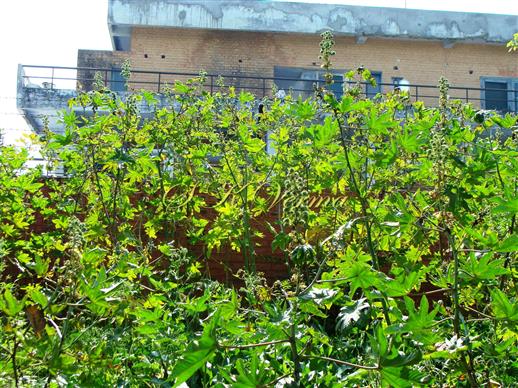
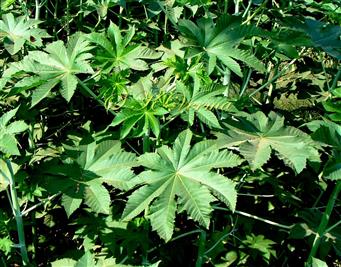
.jpg)

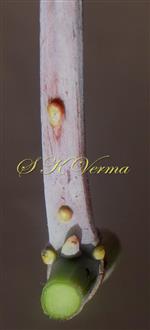
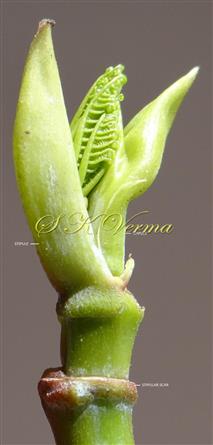
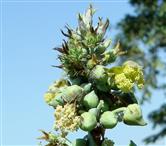
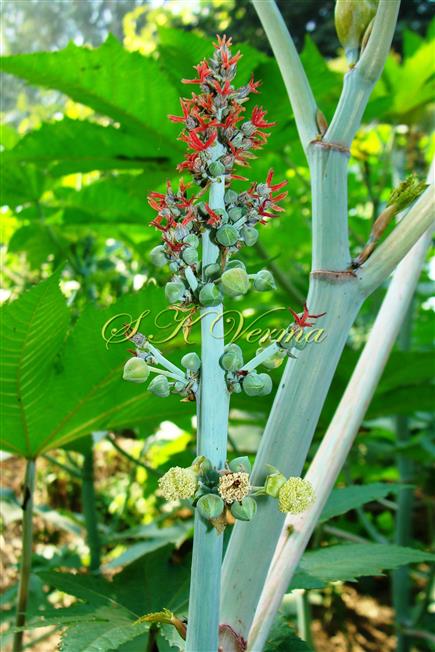
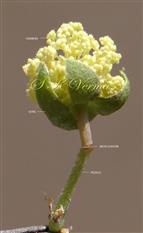

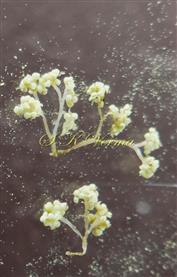
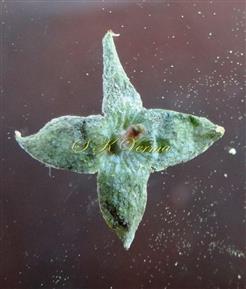
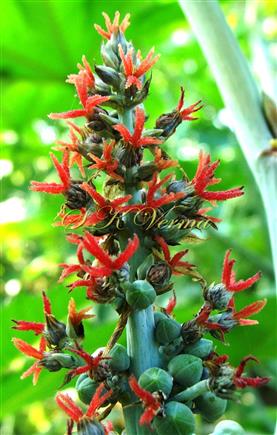
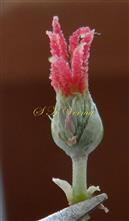
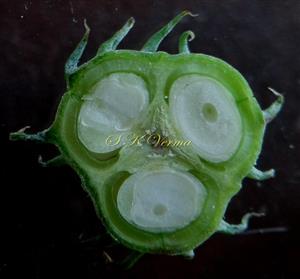
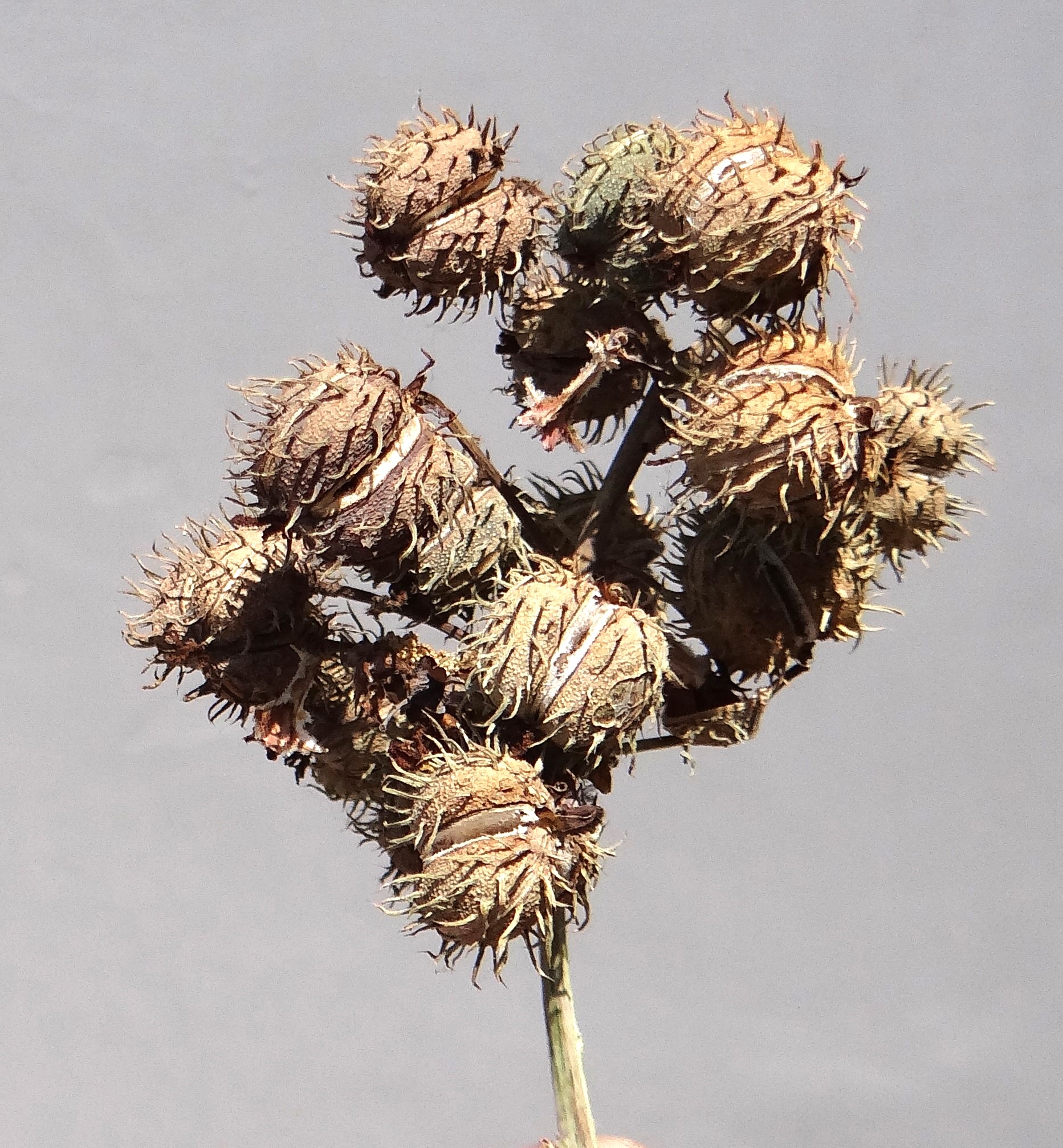
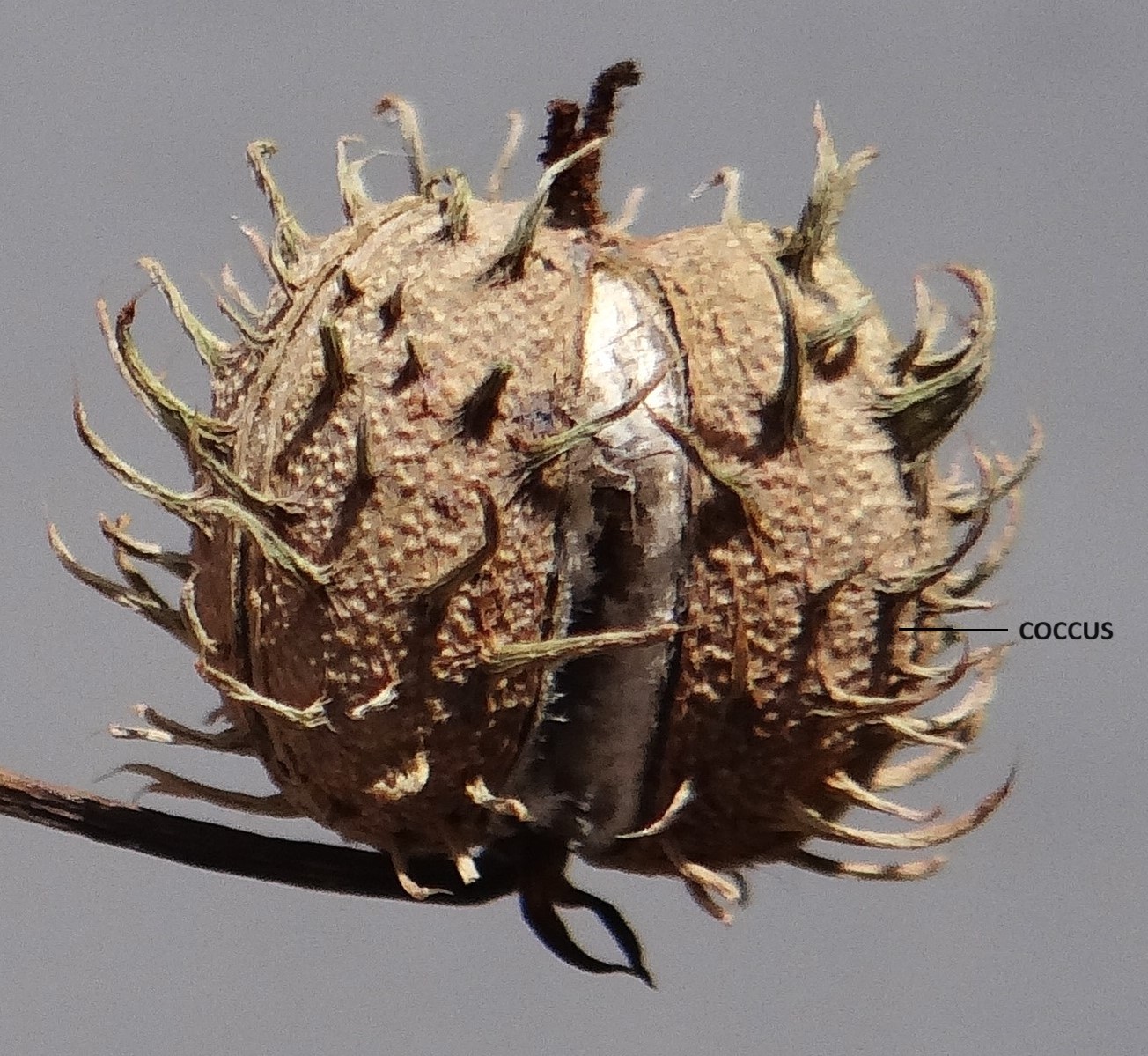
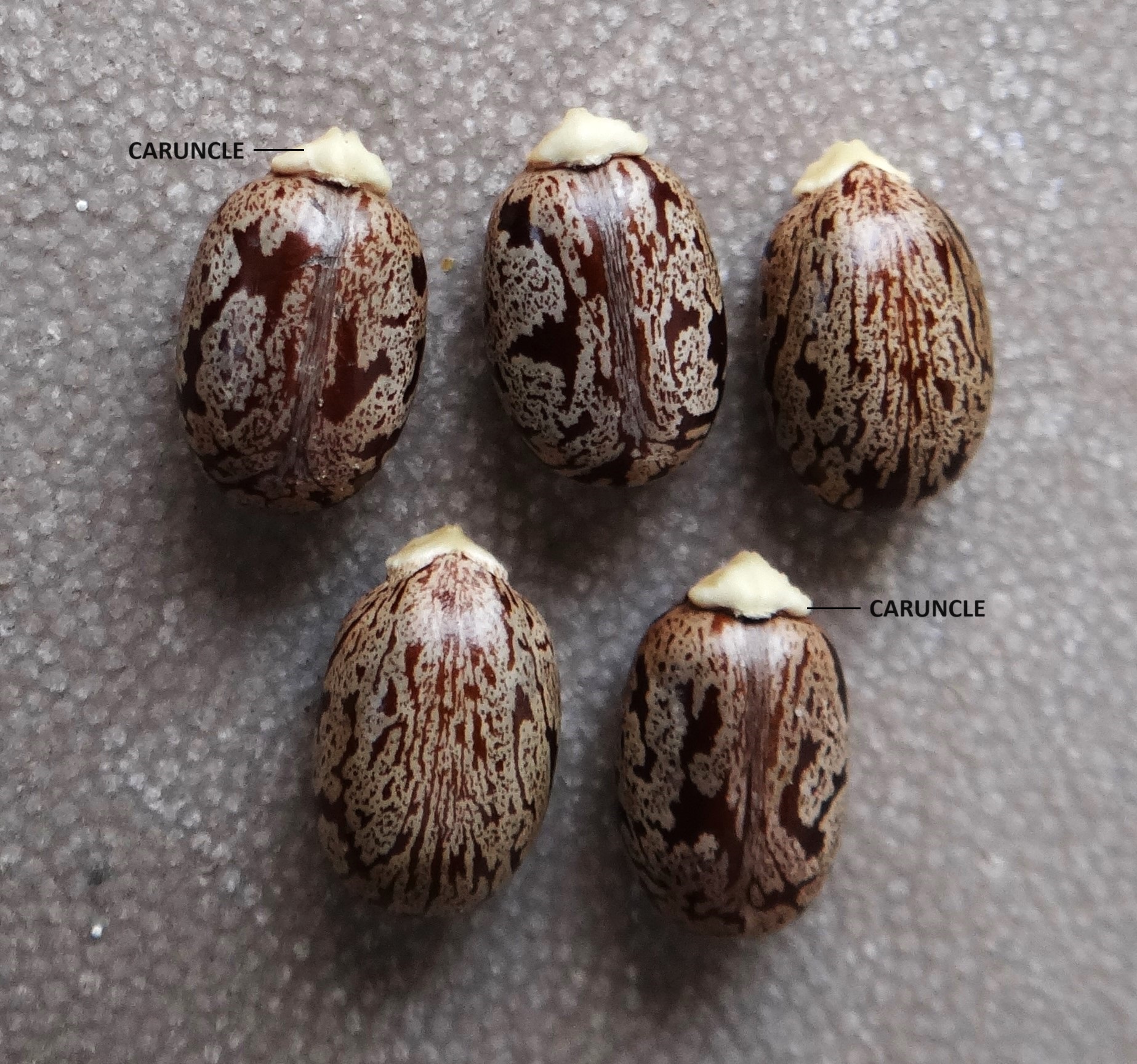
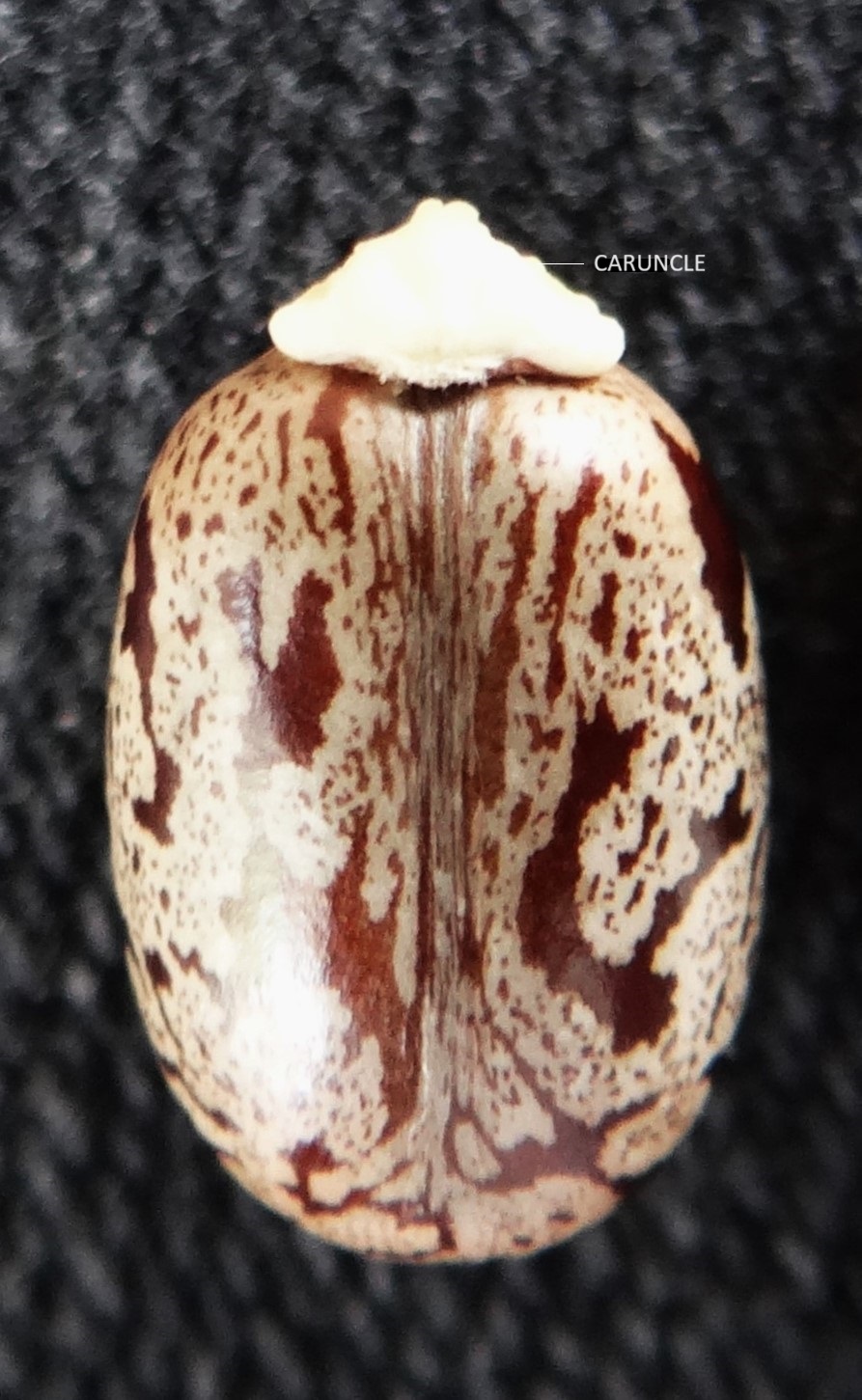



.jpg)















